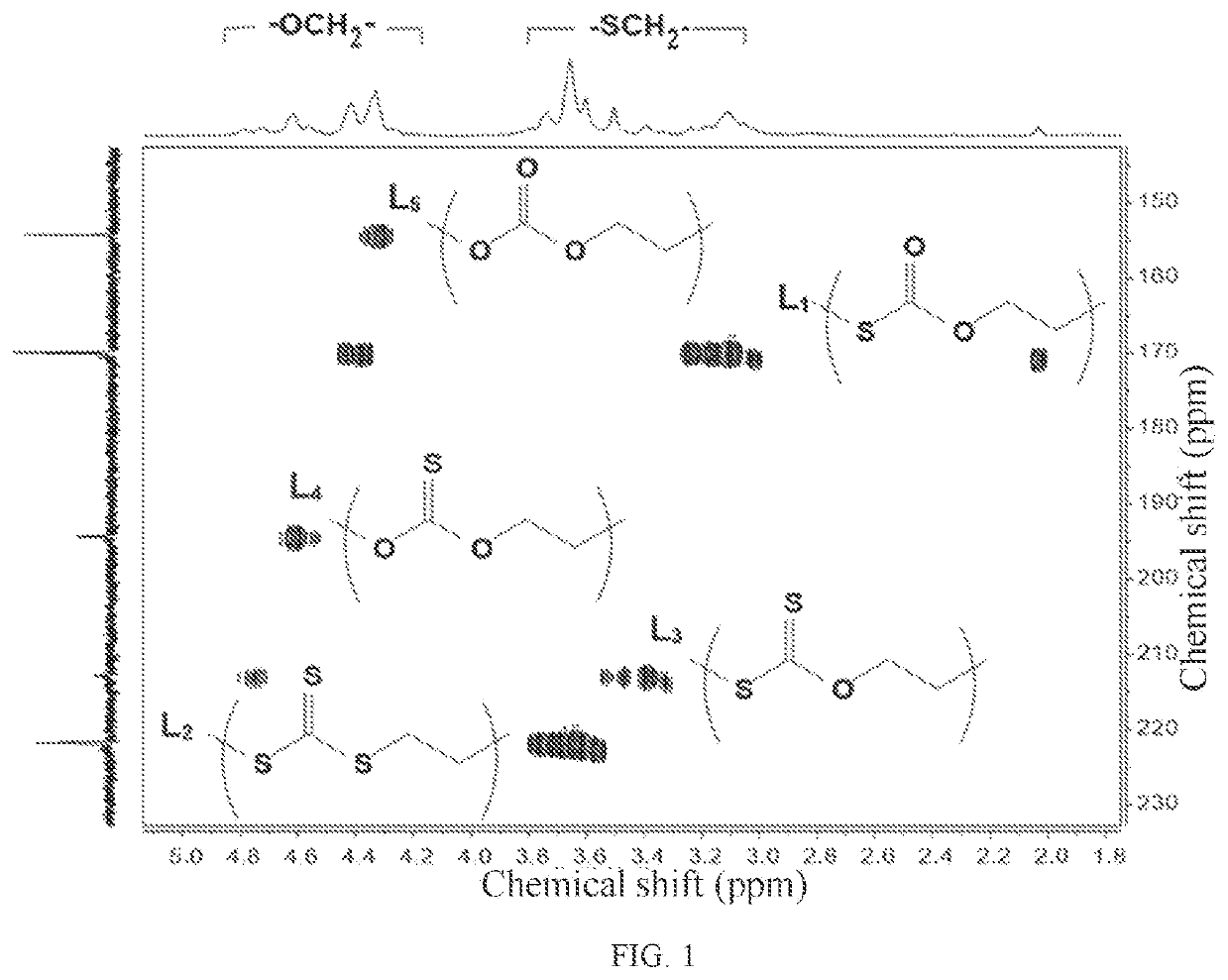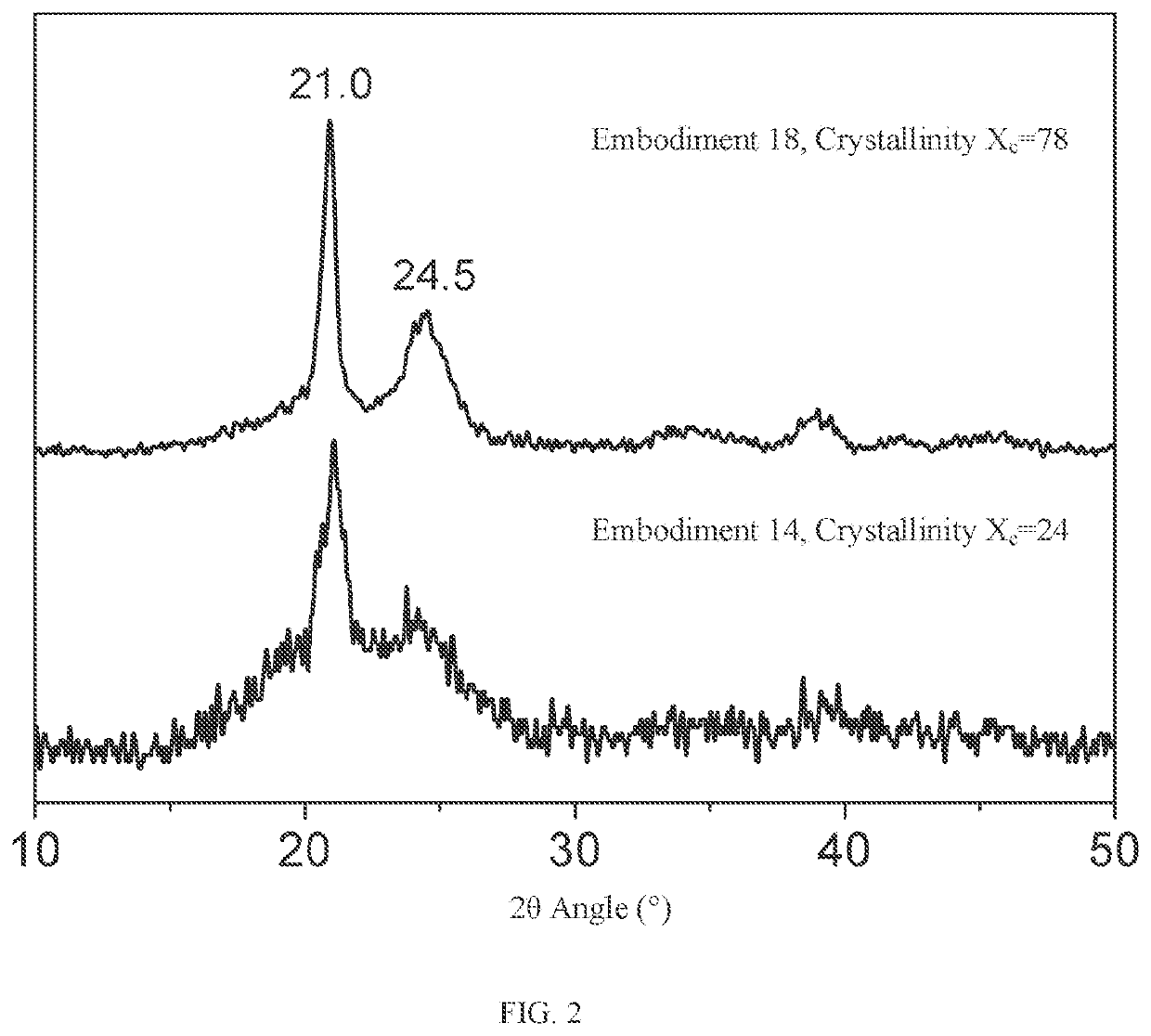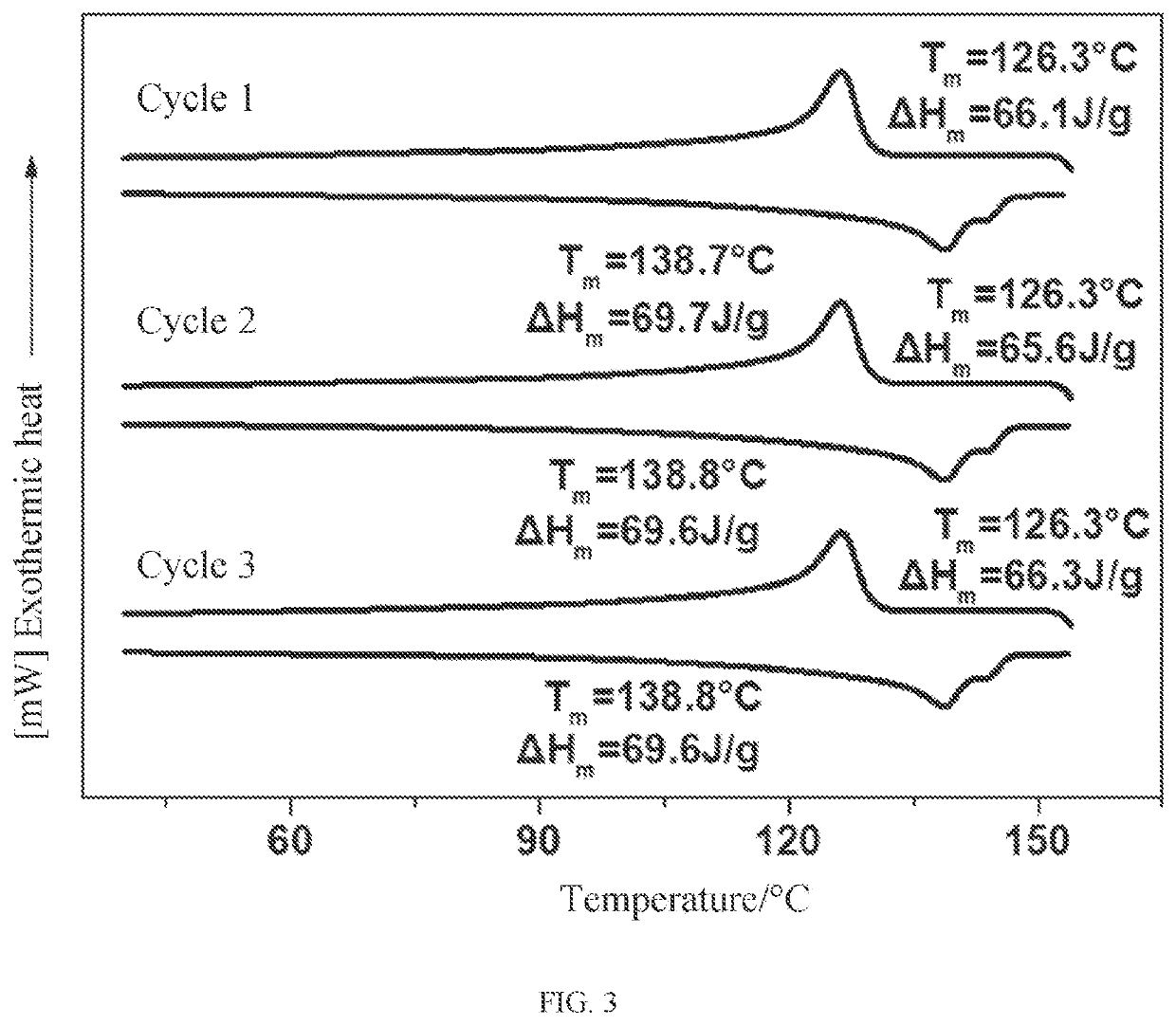Crystalline polythiocarbonate and preparation method therefor
a technology of crystalline polythiocarbonate and polyethylene, which is applied in the field of polymer material technologies, can solve the problems of oxetane having difficulty competing with polyolefins, oxetane having difficulty in matching the performance of olefin polymers, and heavy use, and achieves rapid crystallization, high melting point, and large melting enthalpy
- Summary
- Abstract
- Description
- Claims
- Application Information
AI Technical Summary
Benefits of technology
Problems solved by technology
Method used
Image
Examples
embodiment 17
ymerization of CS2 / EO to Synthesize Polythiocarbonate
[0081]Before the polymerization, a 10 mL autoclave is placed at 110° C. for about 2 hours to remove water and cooled to room temperature in a desiccator. 2.2 mL of tetrahydrofuran, several masses of Lewis acid A1 and initiator 1,8-diazabicyclo[5.4.0]undec-7-carbene (DBU) are sequentially added to the autoclave, wherein the Lewis acid Al and the DBU are in equimolar quantities. The molar ratio of initiator to monomer EO is 1 / 2000. 2 mL of CS2 and 1.1 mL of EO (molar ratio of CS2 to EO being 1.5:1) are added. The autoclave is then closed and placed in an 80° C. oil bath for 12 hours under autogenous pressure. After the reaction is completed, it is cooled to room temperature, and a yellow product is taken out. The crude product is first dissolved in DMSO to 240° C. A polymer is precipitated in methanol, washed three times to obtain a pure product without catalyst, and dried under vacuum to constant weight. The conversion rate is calc...
PUM
| Property | Measurement | Unit |
|---|---|---|
| melting temperature | aaaaa | aaaaa |
| melting point | aaaaa | aaaaa |
| melting point | aaaaa | aaaaa |
Abstract
Description
Claims
Application Information
 Login to View More
Login to View More - R&D
- Intellectual Property
- Life Sciences
- Materials
- Tech Scout
- Unparalleled Data Quality
- Higher Quality Content
- 60% Fewer Hallucinations
Browse by: Latest US Patents, China's latest patents, Technical Efficacy Thesaurus, Application Domain, Technology Topic, Popular Technical Reports.
© 2025 PatSnap. All rights reserved.Legal|Privacy policy|Modern Slavery Act Transparency Statement|Sitemap|About US| Contact US: help@patsnap.com



